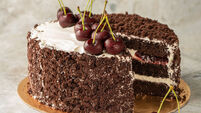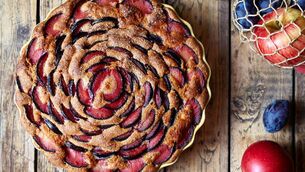Darina Allen: How to get the best of garlic — and its unlikely journey into Irish cookery
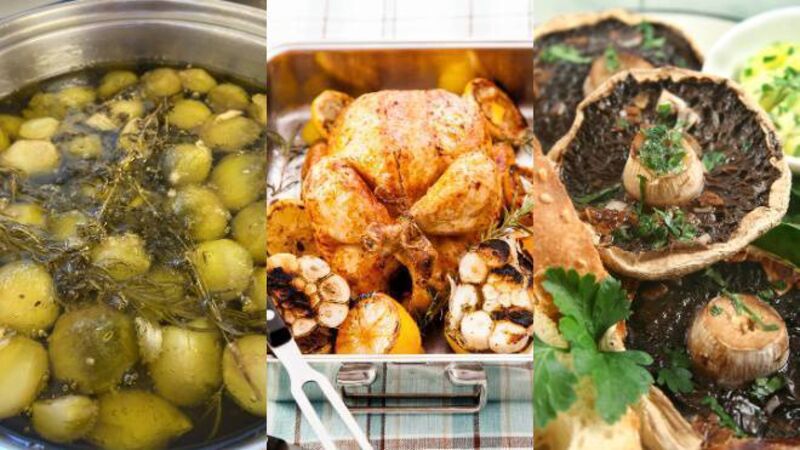
"Well, I certainly remember a time, it doesn’t seem so long ago either, when garlic was considered to be very exotic and somewhat weird."
In this article, we celebrate garlic, the beautiful bulb prompted by our excitement on receiving a recent delivery of gorgeous fat bulbs of new season garlic from a local farmer here in East Cork.
Traditionally, the bulbs were planted on the shortest day of the year and harvested on the longest day of the year, then dried and cured.
Garlic, native to Central Asia, can withstand temperatures of down to -15° and drought. It doesn’t need any special care and adapts to almost all types of soil.
For us, it’s so brilliant to have a local supply of beautiful chemical-free, garlic cloves.
This initiative is the result of a collaboration between us and an entrepreneurial young farmer Matthew Fitzgerald, whom we commissioned to grow several varieties of chemical-free garlic for the Ballymaloe Cookery School.
His farm is just outside Shanagarry village, so it is super local to us. He grows two varieties at present (Messidrome and Gerimidour) but is still experimenting.
Can you imagine life without garlic?
Well, I certainly remember a time, it doesn’t seem so long ago either, when garlic was considered to be very exotic and somewhat weird.
Something the French were crazy about, but according to popular belief, it was a malodorous compound that made their breath smell rank.
I first came across garlic when I was an au pair in France in the mid-60s.
When I came to Ballymaloe House in 1968, Myrtle was already incorporating garlic deliciously into her dishes.
She showed me how to use it judiciously, so it perfumed rather than overwhelmed, we crushed it finely with a few grains of salt to make it into a soft paste to transform a homemade mayo into a fragrant aioli.
She showed us how to spike a leg of lamb with slivers of garlic and tiny sprigs of rosemary before roasting it to melting tenderness in the oven.
I learned how a simple garlic butter could perk up so many dishes, not least Moules Provençale.
We have confited, roasted and sautéed the versatile bulb, even poached whole garlic heads and individual cloves to tease out different levels of flavour.
A garlic press was an impressive gadget in any home kitchen but It has to be said that garlic was not an instant hit in Ireland.
When I started the Ballymaloe Cookery School in September 1983, many cooks were still deeply suspicious of garlic at that stage, convinced that garlic didn’t agree with them - and of course, chilli was an even bigger challenge, but as folks travelled more, our palates developed and now we can’t get enough of hot spicy food, and even specify the difference types of chilli and varieties of garlic we enjoy.
Apart from culinary uses, garlic has many medicinal uses, it’s known to be antiviral, anti-microbial and anti-inflammatory and it frightens away vampires, so altogether worth having.
Garlic is steeped in folklore and myth and associated with all kinds of legends.
Apart from warding off evil spirits and bad luck, it was also used in folk medicine to cure sickness and stave off the common cold.
It was considered a symbol of strength and helped to ensure fertility. Garlic was worn as an amulet by soldiers going into battle and was hung over doorways to ward off the evil eye.
It can even be found on paintings in some Egyptian pyramids, an illustrious history.
It’s good to know that there are several other very good Irish garlic growers (seek out one local to you) but remember it’s really easy to grow your own garlic too.
Just plant the bulbs, root end down in dry ground in mid-December, about 8-9 inches apart in your garden or through your flower bed.
But be aware that if the garlic is planted in very wet ground, it will rot.
I’ve chosen three garlic infused recipes, which I hope you’ll enjoy.
Portobello Mushrooms with Garlic and Parsley Butter
A super simple recipe, delicious on its own as a starter or for supper but also makes a great accompaniment to a steak, lamb chop or chicken breast and are of course vegetarian.
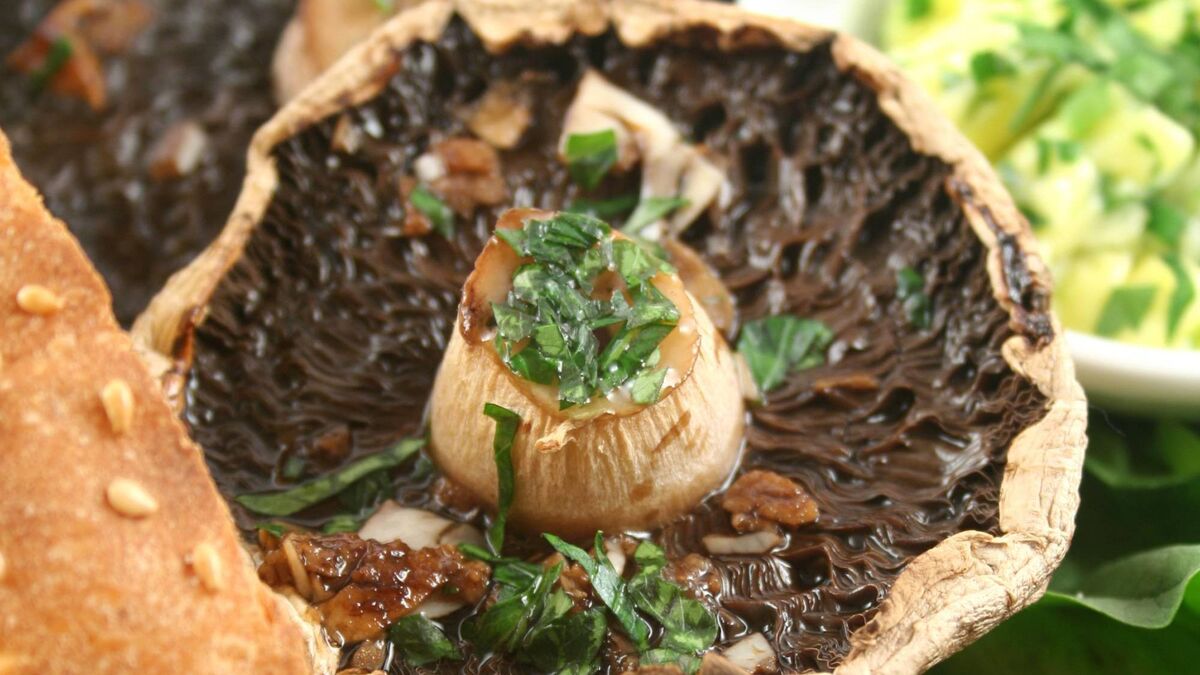
Servings
2Preparation Time
10 minsCooking Time
30 minsTotal Time
40 minsCourse
MainIngredients
4 large, flat Portobello mushrooms (about 400g in total)
85g approx. soft butter
2 garlic cloves, crushed
3 heaped tbsp parsley, finely chopped
salt and freshly ground black pepper
2 tbsp extra virgin olive oil
Method
Preheat the oven to 200°C/Gas Mark 6.
Wipe the mushrooms and cut off the stalks with a sharp knife.
Mash the butter in a bowl with the crushed garlic and finely chopped parsley, season with flaky sea salt and freshly ground black pepper.
Pour 1 tablespoon of the extra virgin olive oil in a roasting tin large enough to take the mushrooms in a single layer. Arrange the mushrooms, stalks upward.
Divide the garlic butter between the mushrooms, spreading it evenly inside the surface. Drizzle the remaining olive oil over the edges of the mushrooms. Bake for about 25-30 minutes until they are cooked through and enjoy as soon as possible.
Chicken Roasted with Whole Cloves of Garlic
Garlic has many different flavours, depending on how you use it. Here we go to the extreme and seemingly throw caution to the wind, roasting our chicken with lots and lots of plump garlic cloves.
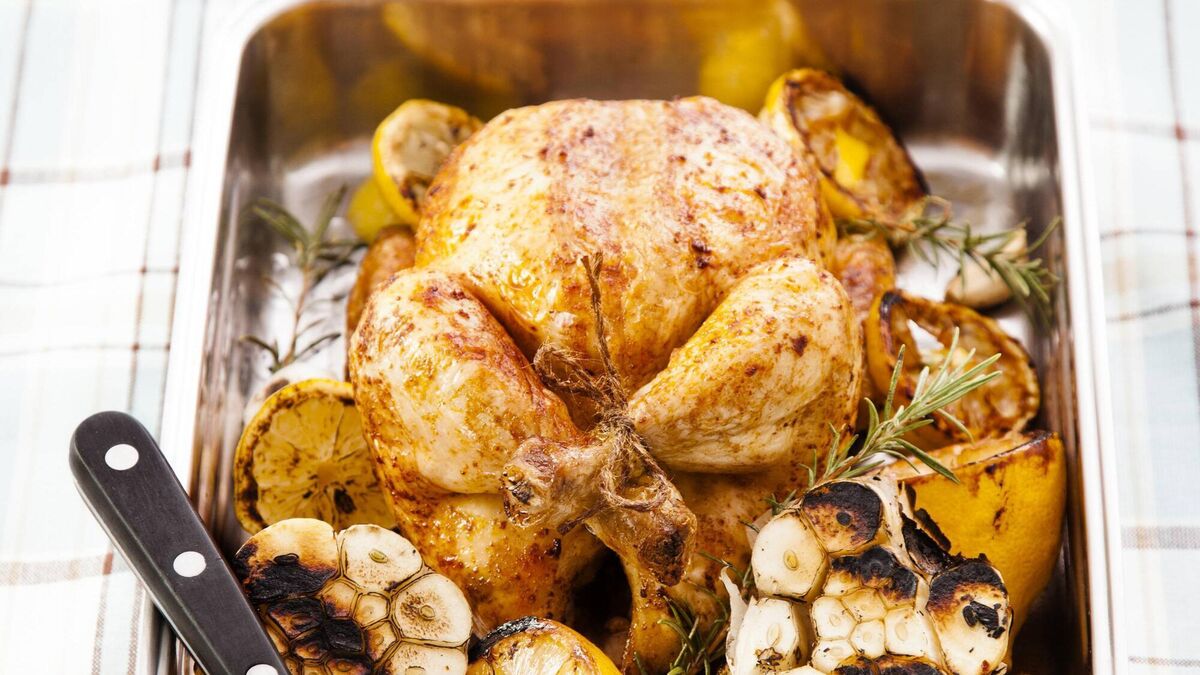
Servings
6Preparation Time
20 minsCooking Time
50 minsTotal Time
1 hours 10 minsCourse
MainIngredients
1 free-range chicken, 1.5-1.8kg
Salt and freshly ground black pepper
1 sprig of thyme (or rosemary)
55g peeled plump garlic cloves
15g soft butter
A good drizzle of olive oil
450g unpeeled plump garlic cloves
Gravy:
450ml homemade chicken stock or two-thirds stock and one-third dry white wine
Cotton string
Method
Season the cavity of the chicken with the salt and freshly ground black pepper, then put in the sprig of fresh thyme (or rosemary) and the peeled garlic cloves. Smear the breast and legs with some soft butter, season with salt and freshly ground pepper. Truss lightly with cotton string.
Preheat the oven to 180°C/Gas Mark 4.
Put the chicken breast side down into the roasting tin and drizzle with a little olive oil. Roast for 30 minutes, then turn breast side up and continue to roast. After about 15 minutes add the unpeeled garlic to the roasting tin — toss in the oil and chicken fat and add a little more olive oil if necessary. Continue to roast until the chicken is golden and fully cooked. Watch the unpeeled garlic cloves to make sure they don't overcook —he garlic inside the skins should be soft and sweet.
When the chicken is cooked, remove to a serving dish. Surround with the unpeeled garlic, spoon out all the garlic from the cavity and test to make sure the cloves are cooked. I often find that they need a little longer, so I put them into a saucepan with a little chicken stock and continue to cook for 5-10 minutes more or until they are soft, then add them to the carving dish.
Meanwhile make the gravy. Degrease the roasting tin, add the homemade chicken stock to the juices, bring to the boil and whisk gently to help to dislodge and dissolve the caramelised juices on the tin. Taste and season with salt and freshly ground pepper. If you like, thicken slightly by whisking in a little roux but I usually serve it just as it is. Serve the gravy and whole garlic cloves with the chicken.
Oven-Roasted Garlic Confit
Long slow cooking transforms garlic cloves into soft golden brown nuggets. We love to spread them over toast or crostini, serve them whole with grilled meat, vegetables, fish or scatter over a dish of pasta.
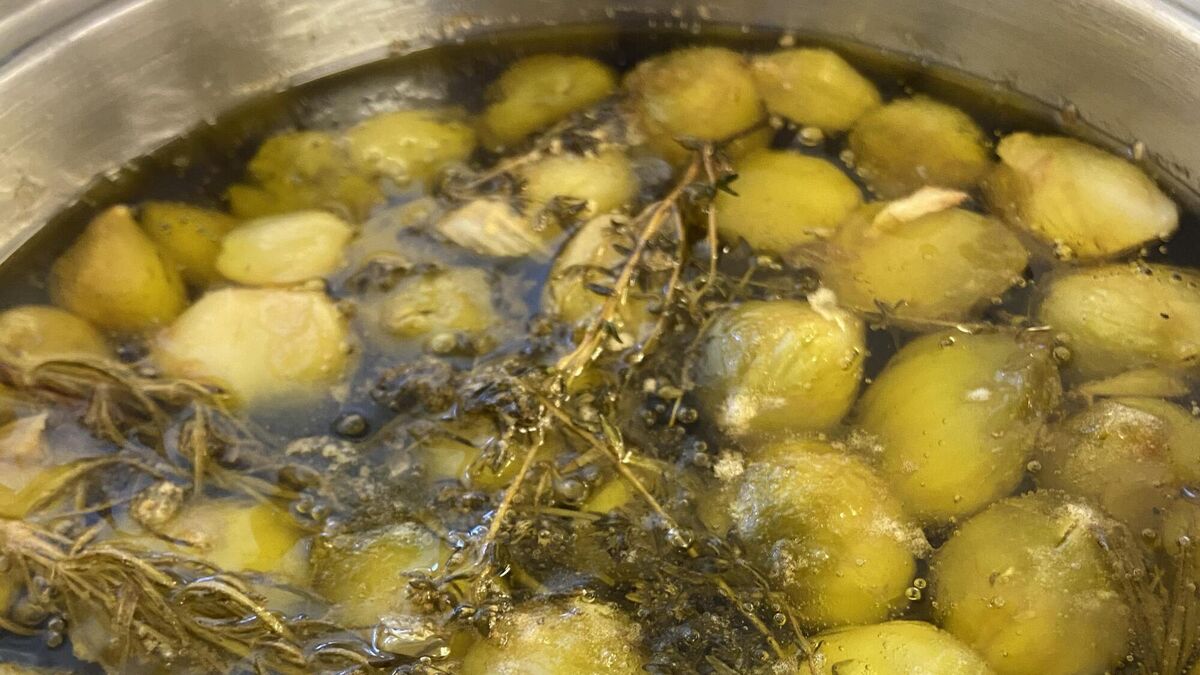
Preparation Time
5 minsCooking Time
45 minsTotal Time
50 minsCourse
SideIngredients
400g garlic, cloves peeled (5 heads of garlic approx.)
2 sprigs fresh rosemary
2 sprigs thyme
1 tsp salt
5 peppercorns
400ml olive oil
Method
Preheat the oven to 160°C/Gas Mark 3.
Place the garlic cloves, herbs, salt and pepper into a low-sided stainless-steel saucepan. Pour the oil on top. The garlic should be at least 75% submerged in oil. If it’s not, switch to a smaller container or add more oil.
Bring to a gentle simmer, do not boil.
Cook the garlic uncovered, for 45 minutes or until the cloves are soft and golden in colour. Allow to cool completely before serving or storing.
Store in sterilised jars in the fridge, making sure the garlic is submerged in the olive oil. The confit garlic will keep for one month approximately and is a brilliant standby.
As anyone who is coeliac or cooks for someone who has a gluten intolerance will testify, it can be challenging to produce really delicious, balanced meals.
This half-day cookery demonstration may just be what you need. Suitable both for the newly-diagnosed coeliac, who has never baked before, as well as the more experienced cook, this course is ideal for those on a gluten-free diet who face the dilemma of longing to taste ‘real’ food.
You’ll learn a whole range of delicious and easy-to-prepare dishes including gluten-free sweet and savoury pastry.
Join UK-based doctors David and Jen Unwin, a GP and a clinical psychologist, for an exploration of food, health and metabolic wellbeing.
The Unwins are obsessed with preventing ill health through lifestyle medicine instead of lifelong medication.
What if you could enjoy every meal and have it do you good?
This course will delve into the impact that diet has on conditions like type 2 diabetes, obesity, kidney function and liver function and you will learn why junk or ultra-processed food causes people to be overfed but undernourished.
Ideal for healthcare professionals, those dealing with metabolic conditions and those interested in improving health through diet.
Wild honeybee conservationist and cabinet maker Matt Somerville designs and builds bee hives that encourage minimal intervention, reducing both stress and disease in the bees.
Inspired by wild bee colonies and informed by natural beekeepers over the years, he spends the winters creating his log hives before erecting them in summer around England.
Matt makes the Freedom hives from Western Red Cedar, a light durable timber with good insulation properties.
Over the two days, Matt will teach you how to build a Freedom Hive and a Freedom Log Hive and the best place to position the hives and more so you can replicate the build at home.



